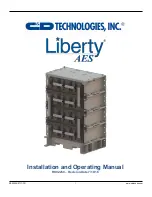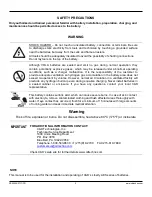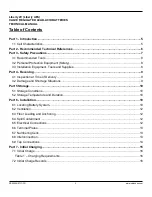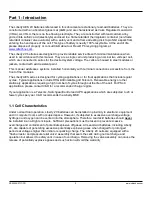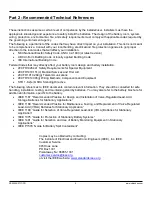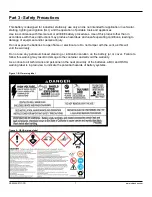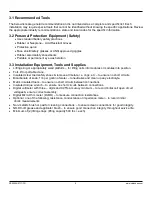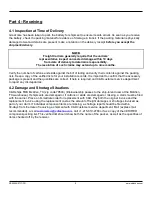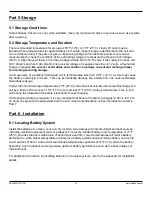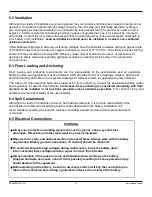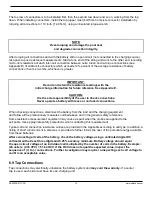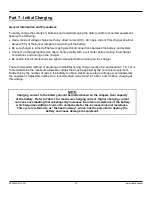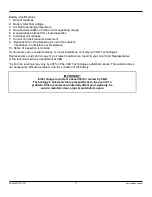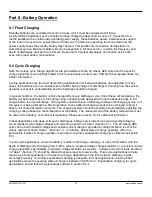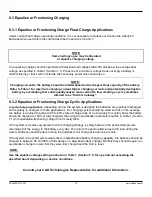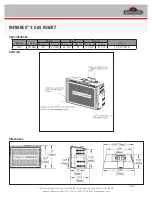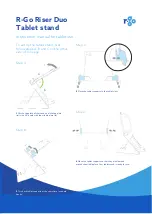
RS02250/0717/CD
5
www.cdtechno.com
Part 1 - Introduction
The Liberty AES 2V batteries referenced in this document are stationary, lead-acid batteries. They are
constructed with an absorbent glass mat (AGM) and are characterized as Valve Regulated Lead-Acid
(VRLA). As VRLA, there is no free flowing electrolyte. They are constructed with lead-calcium alloy
grids, dilute sulfuric acid (electrolyte) enclosed in a flame retardant thermoplastic container
(non-flame
retardant container also available
) with a safety vent and a flame arresting disk to prohibit a spark from
entering the head space of the cell. This type of battery is nearly 100% recyclable. At the end of life,
please dispose of properly or consult C&D about our Revert Pb recycling program at
The Liberty 2V batteries are designed to provide reliable service life with minimal maintenance when
used in accordance with this manual. They are a single cell unit producing a nominal two volts per cell,
which are connected in series for the desired system voltage. The cells are housed in steel modules or
jackets, coated with acid resistant paint.
This manual addresses systems installed horizontally with terminal connections accessible from the
front of the modules.
The Liberty AES series is designed for cycling applications or for float applications that include regular
cycles. Typical applications include Off-Grid/Unreliable grid Telecom, Renewable energy or other
stationary applications requiring a high number of cycles throughout the life of the cell. For PSoC
applications, please consult C&D for a recommended charge regime.
If your application is a Telecom, Switchgear/Control and UPS applications which are subjected to 20 or
fewer cycles per year, C&D recommends the Liberty MSE.
1.1 Cell Characteristics
Under normal float operation, Liberty 2V batteries can be installed in proximity to electronic equipment
and in computer rooms with occupied space. However, if subjected to excessive overcharge voltage,
hydrogen and oxygen can be vented into the atmosphere. Therefore, lead acid batteries should
never
be installed in an airtight enclosure. Sufficient precautions must be taken to prevent excessive
overcharge and containment of potential explosive off gases. All Lead-Acid batteries, including Liberty
2V, are capable of generating excessive potentially explosive gases when charged for prolonged
periods at voltages higher than initial or equalizing charge. The Liberty 2V cells are equipped with a
“flash arrestor and pressure relief valve” assembly that seals the cells during normal charge and
operation but allows it to safely vent in case of overcharge. Removing the valve assembly can cause the
release of potentially explosive gases and such action will void the warranty.

